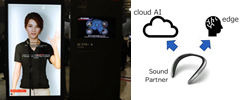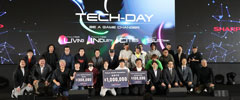Let’s observe the stars in the sky with your AQUOS smartphone!
September 6, 2023
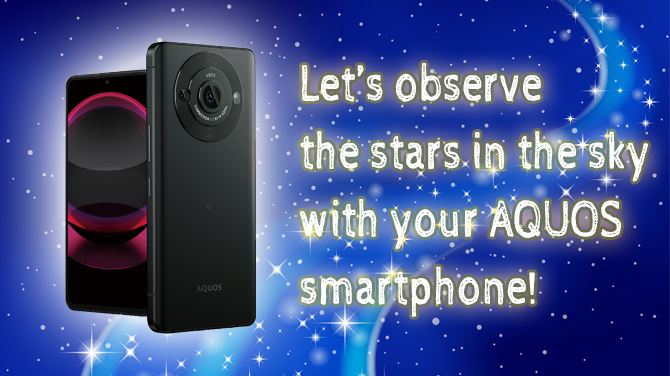
Today I would like to introduce shooting the stars in the sky using SHARP’s smartphone AQUOS R8 pro, the latest flagship model smartphone released in Japan this July.
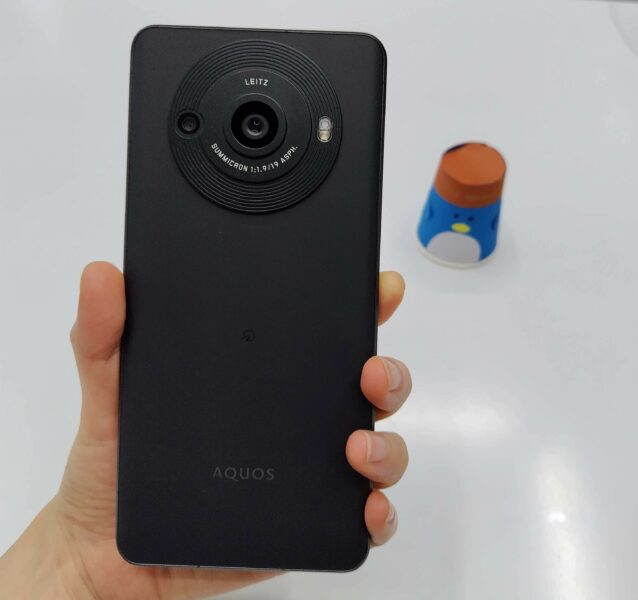
The camera used in AQUOS R8 pro is supervised by Leica Camera AG. Equipped with a 1-inch image sensor that boasts an overwhelming amount of light collection for a smartphone, it allows users to take bright and beautiful photos as if taken by a professional without the need of any special technique.
Its advanced AI engine recognizes not only people, but also food and pets, allowing users to take photos that bring out the best in a variety of subjects. It also newly supports fireworks mode and starry sky mode.
Now let’s o bserve the night sky using the new Starry Sky Mode!
Have you ever felt it is difficult to take good pictures of the night sky? I also experienced shooting the night sky only turning out in a grayish crumbly quality. Ever since, I had given up on the idea of shooting the twinkling stars with a smartphone, and focused on engraving the images with my own eyes.
But the Starry Sky Mode of the AQUOS R8 pro is amazing. Before putting it into practice myself, I will first show you a photo taken at in Hiroshima by a member of our smartphone development team.
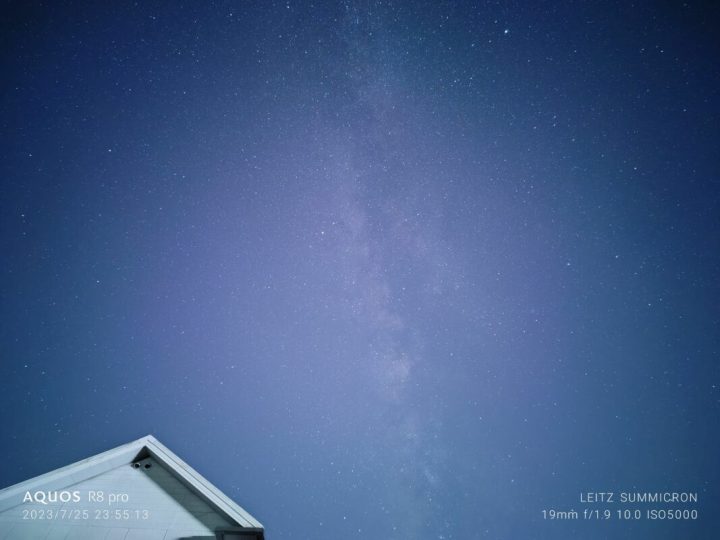
How beautiful the stars are! It looks like a planetarium. The blur stretching up and down in the center is probably the Milky Way. I was impressed by the beauty of the stars in Hiroshima and at the same time surprised at how easy it was to take photos in Starry Sky Mode that looked like they were taken with full-fledged photographic equipment. The large sensor size allows the camera to capture even delicate light such as starlight in the dark.
As an extra example of what can be captured beautifully in Starry Sky Mode, here is a photo of fireflies taken during development at Hiroshima.
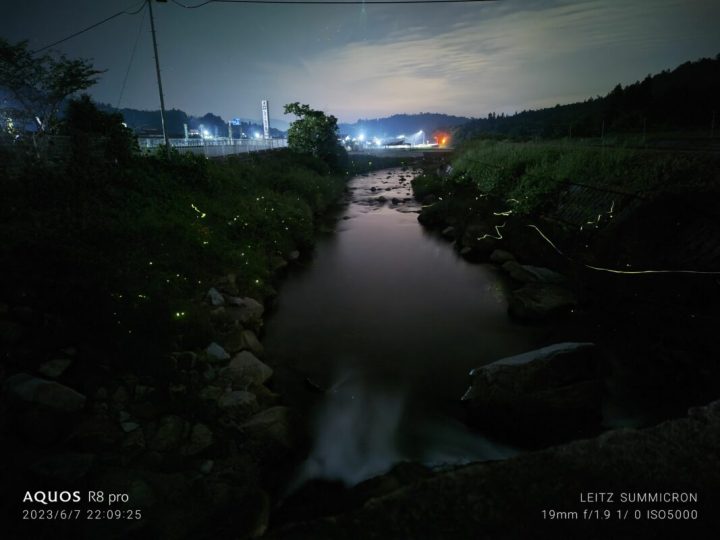
I have never seen fireflies, but I hear that they are just as difficult to shoot as stars. Isn’t this photo amazing too? Some of the fireflies’ lights are line-shaped is because the Starry Sky Mode takes a long exposure time to take pictures in dark places, so the paths that the fireflies traveled during that time becomes a trail of light.
Now that I have introduced the features of Starry Sky Mode, it is time to put it into practice. I live in Tokyo, and since I cannot see as many stars as in Hiroshima, I was a bit worried whether I could capture enough stars to make my blog worthy.

A test shot of my sidekick penguin cup with AQUOS R8 pro night mode.
It was taken at nighttime, but the picture is as clear and bright as daytime.
Here are some tips for shooting in Starry Sky Mode. To prevent image blurring, the camera should not be hand-held, and the main unit should be fixed on a tripod or a similar device. If you don’t have a tripod, you can either set the main unit on something to hold it in place, or as a secret technique given from our development team, place the camera on the ground with the camera app running so that the camera faces upward (be careful not to damage the screen) and activate the shutter by pushing the volume control button.
STUDY1:
【What magnitude stars can I see from near my house?】
First and foremost, I looked for the stars: on a clear night in late July, I went out with the AQUOS R8 pro near my house (in a residential area + some fields) and started shooting. Incidentally, the moon was a little less than half-moon, but had almost set by this time. It is a good condition for star observing.
The best place to observe the stars is as dark as possible. I photographed the eastern sky, where the “Summer Triangle” appears at this time of the year in Japan. I used Starry Sky Mode from a place in the shadows where no artificial lights are directly shining in the vision.
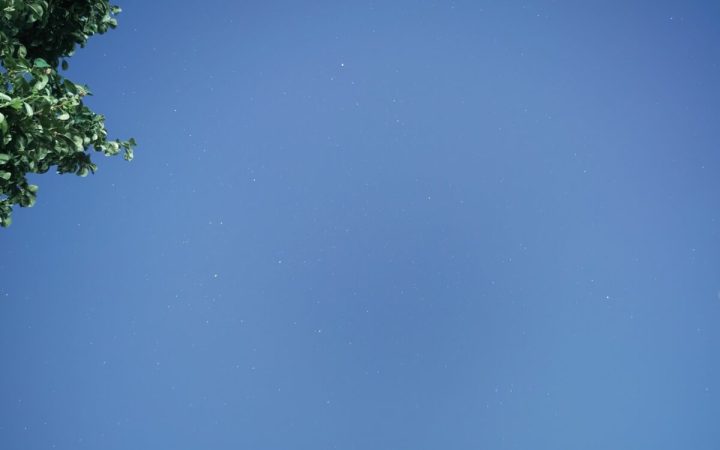
The stars were more visible than I expected! If you look closely at the pictures I took, you can see enough stars to make it difficult to count them. To be honest, I had expected to see only a few stars, so I was pleasantly surprised to see so many stars in my neighborhood without having to go to an observatory spot.
So what magnitude of stars can be observed from my house? The brightest stars are 1st magnitude, and the faintest stars are 6th magnitude, which is the limit of stars visible to the human eye. The magnitude of a star is also related to the distance between the star and the earth, and a star that is closer to the earth appears brighter.
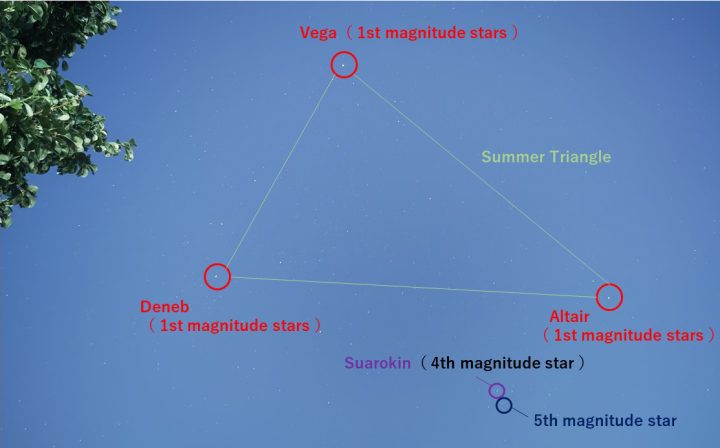
Vega, Deneb, and Altair, which make up the Summer Triangle, are clearly visible because they are first magnitude stars. In contrast, the four diamond-shaped stars to the lower left of Altair in this photo are the ones that caught my attention as darker stars. They are part of the constellation Delphinus.
I feel that I can see up to the 4th magnitude star called Suarokin, but the 5th magnitude stars below it are very faint. I guess we can observe up to 4th magnitude stars from my house. I don’t feel that I can see stars better with the naked eye, and I feel that the Starry Sky Mode captures stars better than the naked eye.
According to my studies, there is an index called “absolute magnitude,” which ranks stars by their brightness when seen at a distance of 32.6 light years from the earth, and indicates their true brightness. Our dazzling Sun is a surprisingly faint star in the vast universe.
Why don’t you check what magnitude stars you can see from your home too?
STUDY2:
【What constellations can you see from near my house?】
Let’s see what constellations are visible in the photo that we have just checked up to what magnitude stars can be seen. (The image quality has been adjusted to make the night sky a little darker than the original data so that the stars can be seen as much as possible, because they are very detailed.)
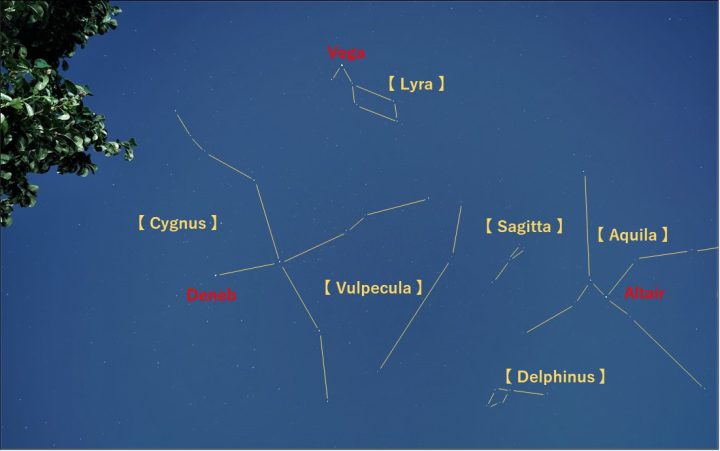
The Eagle constellation was slightly out of place in this picture. Personally, I was interested in Sagitta, which is in the Summer Triangle but has a simple shape. Many constellations have myths and stories, and it is said that this constellation is a substitute for falling in love with any person who is shot in the heart with this arrow.
Also, the rhombus of the constellation Aquila, which I mentioned in Study 1, is a formation that is quite easy to capture when you actually see it, although the brightness of the stars is not that great, and I was able to remember its existence through this free research.
Based on these studies, I decided to actually drew a picture of the constellation’s motif. I can remember the arrangement better when I draw pictures.

It looks like Sagitta is aiming quite close to the constellation Vulpecula…. Even though dolphins are actually larger than eagles (depending on the species), The Eagle constellation is by far the largest in this image.
STUDY3:
【Let’s observe the International Space Station (ISS)!】
This is my last research topic. The International Space Station (ISS) is a manned experimental facility about 400 km above the ground, about the size of a football court, orbiting the earth at a speed of about 90 minutes per revolution. Do you know that the ISS can be seen passing overhead at certain times of the day, depending on the region and day?

The ISS was going to pass the sky above Saitama Prefecture for a few minutes, and I asked for the help of my colleague living there to shoot the sky during those few minutes by Starry Sky Mode. Fortunately, we succeeded in capturing it!
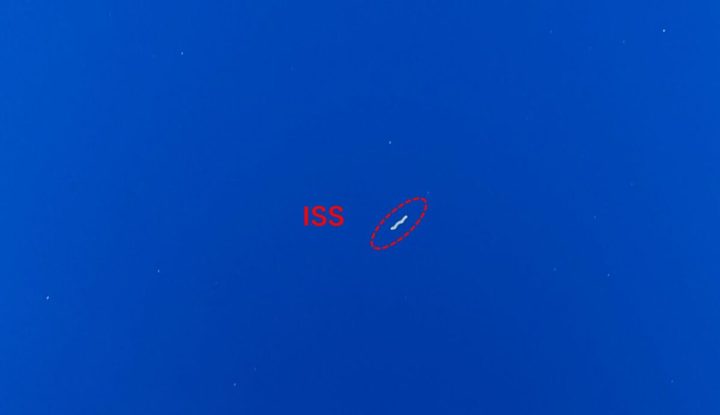
The ISS looks like a moving star from the ground, so if you take a picture of it in Starry Sky Mode, it appears like a line as if a shooting star. It feels amazing imagining astronauts from various countries are working up there in that space.
By the way, the ISS does not emit light, but it reflects sunlight and appears to shine like a star.
When the ISS is visible, it is nighttime on our side, but it is daytime on the ISS side because the sun is shining on the ISS.
Through this study, I was able to fully enjoy the fun of the Starry Sky Mode. I might have appeared like a suspicious person in my neighborhood wandering in the dark when I was taking these pictures, but I am glad I was not reported. I recall I wore insect repellents this day, and the smell of the repellent stuck in my nose all night. Still, all of that is now part of a good memory of my successful studies.
*Make sure adults accompany children if they want to try a similar study.
(N from PR)
